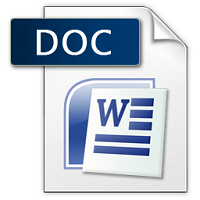₹198.00
Scroll down for Match your questions with Sample
Note- Students need to make Changes before uploading for Avoid similarity issue in turnitin.
Another Option
UNIQUE ASSIGNMENT
0-20% Similarity in turnitin
Price is 700 per assignment
Unique assignment buy via WhatsApp 8755555879
Description
SESSION AUG-SEP’23
PROGRAM MASTER OF BUSINESS ADMINISTRATION (MBA)
SEMESTER IV
COURSE CODE & NAME DITF404
Enterprise Resource Planning
Assignment Set – 1
Questions
- Explain the ERP selection criteria and methodology for ERP
Ans:
(a) ERP Selection Criteria: Business Requirements Assessment:
Criteria: Understand the organization’s business processes and requirements thoroughly.
Methodology: Conduct interviews, workshops, and surveys to gather input from key stakeholders. Document current processes and identify pain points and improvement areas.
Scalability and Flexibility:
Criteria:
Its Half solved only
Buy Complete from our online store
https://smuassignment.in/online-store/
MUJ Fully solved assignment available for session SEPT 2023.
Lowest price guarantee with quality.
Charges INR 198 only per assignment. For more information you can get via mail or Whats app also
Mail id is aapkieducation@gmail.com
Our website www.smuassignment.in
After mail, we will reply you instant or maximum
1 hour.
Otherwise you can also contact on our
whatsapp no 8791490301.
- Discuss about ERP in Manufacturing and Finance
Ans:Although ERP software is frequently referred to as “financials,” ERP and financials are not the same things. ERP’s Financials subset of modules is referred to here. Financial functions include modules for accounting hub, financial accounting, sub-ledger accounting, payables and receivables, expense management, revenue management, grants, billing, project management, joint venture
- Interpret on MRP and MRP II to boost a manufacturing company’s competitiveness with ERP
Ans: MRP and MRP-II to boost a manufacturing company’s competitiveness:
Material Requirements Planning (MRP) & Manufacturing Resource Planning (MRPII):-
The goal of MRP is to automate three key processes in a manufacturing unit:
- Reduce lead times
- Improve stock levels
- Increase service levels to improve organizational effectiveness
To help manufacturing companies estimate and optimize their material requirements, in the year 1970s MRP was created. The earlier Material Requirements Planning later developed into
Assignment Set – 2
Questions
- Discuss upon the ERP in Purchase department.
Ans:Purchasing module makes it easier to buy the necessary raw materials. Additionally, it automates the purchasing operations. Finding potential suppliers and haggling over prices are processes. Additionally included are the processes for billing and awarding purchase orders to the supplier. Supply chain management software is frequently used in conjunction with the ERP procurement module, which is firmly integrated with the production planning modules and
- Explain CRM software implementation in ERP.
Ans:The Payne and Frow Five Forces: CRM approach additionally includes phases that assist in customer segmentation based on potential long-term value and offer KPIs for engaging those segments. The procedures involve developing a strategy, creating value, integrating many channels, evaluating performance, and managing information. This model also lists four requirements that must be
- Analyse the benefits of Human Resource Management module of ERP in an organization.
Ans:Several components are thought of as pillars for good HRM policy when we talk about HRM.
These pillars include:
Recruitment and selection:
A primary HR duty is to find candidates and pick the best ones to join the organization and work there. The organization’s lifeblood is its people, thus identifying the right candidates is an important endeavour.
When a new position is created or an existing position becomes available, the demand for new hires typically begins. The job description is subsequently forwarded by the direct manager to


